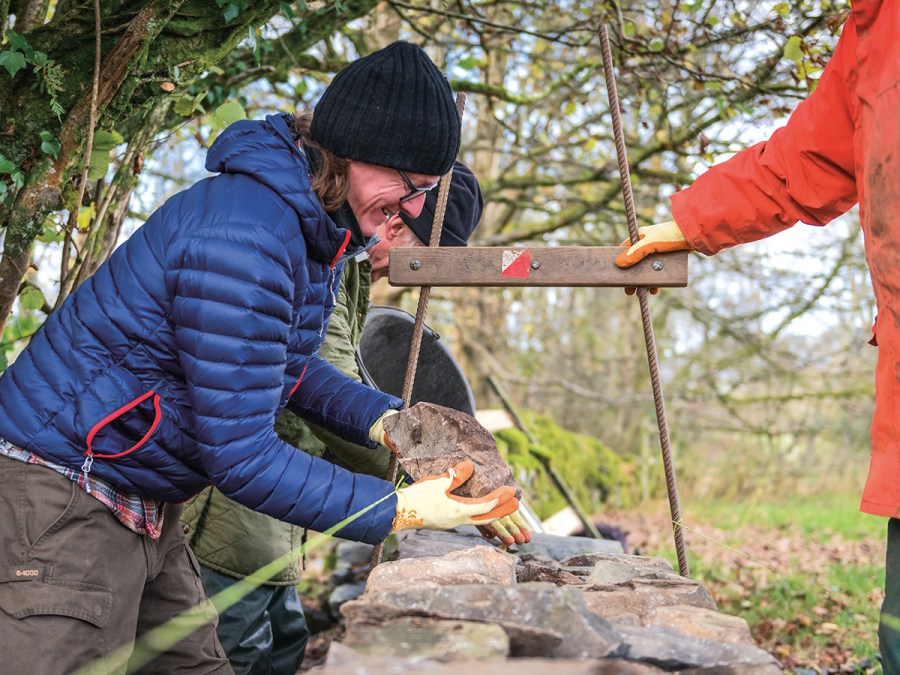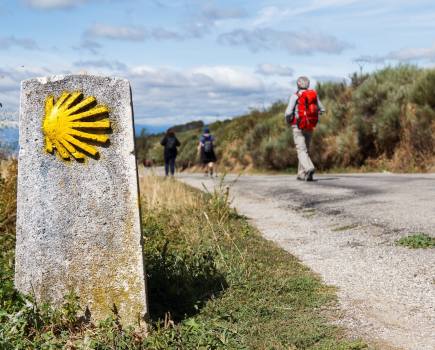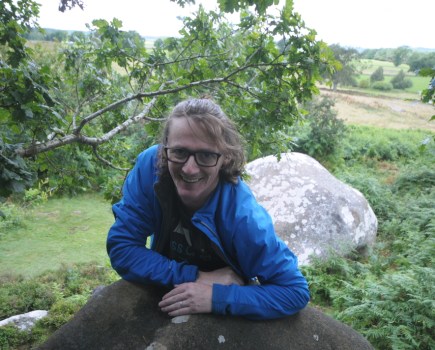Ed joins the Cumbria Branch of the British Dry Stone Walling Association
Ed Byrne is currently touring Britain with his new show, Spoiler Alert, as part of which he shares some hilarious insights into the trips he’s made into the hills for The Great Outdoors magazine. To celebrate, we are publishing one of his archive features each week as a treat for Ed’s fans and readers of The Great Outdoors.
This feature was first published in our January 2018 issue
I think we all have different ideas regarding the aesthetic effect that humans can have on the landscape. For some, the sight of any form of human influence on the wilderness, even something as slight as a drainage ditch, is viewed with the same contempt as a turd in a swimming pool, rendering the entire thing tainted. Other people would look at a mountain cut in half by a quarry and see such a thing as a triumph of man over nature. Most of us, I imagine, are somewhere in between.
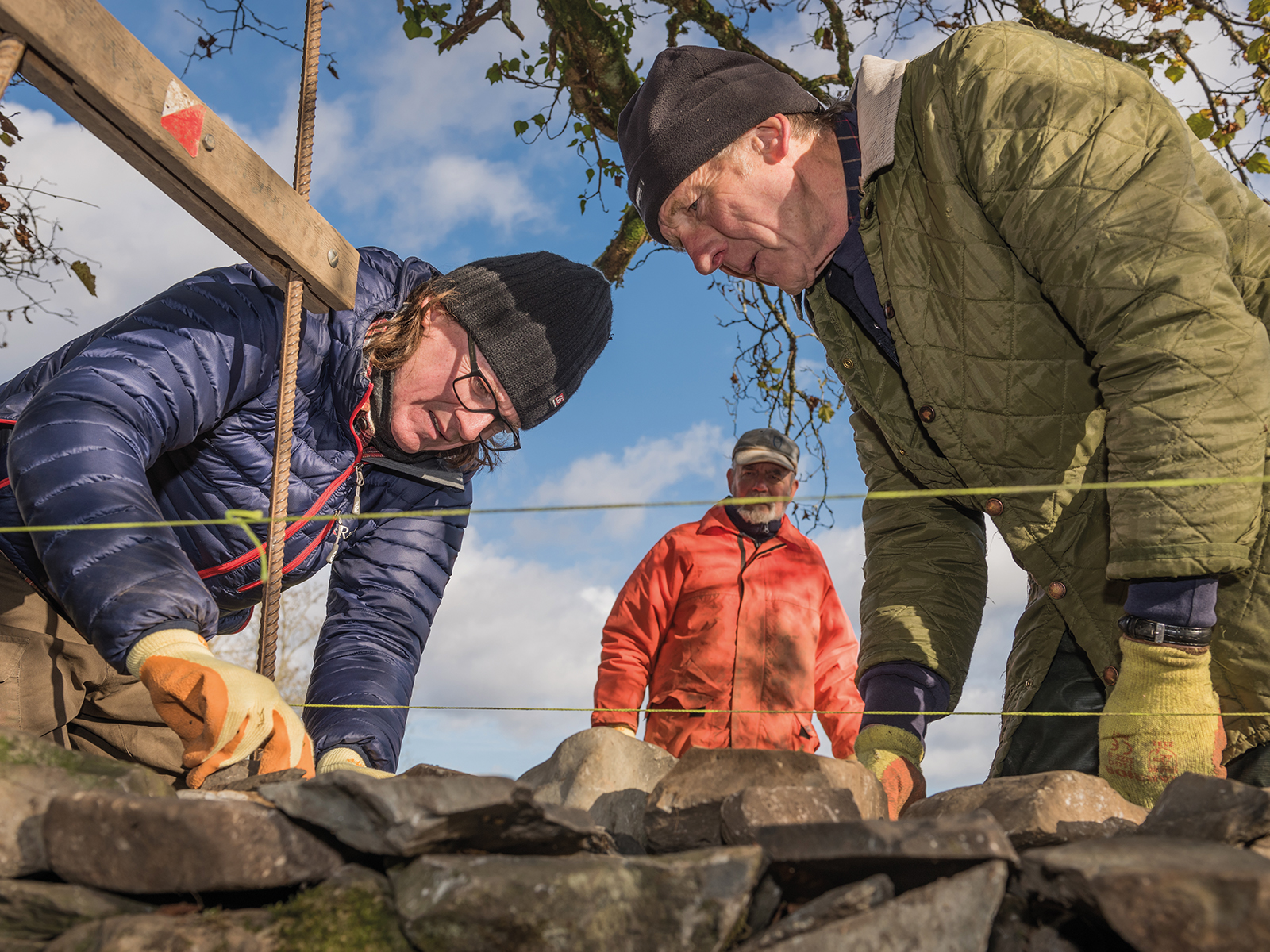
A general rule seems to be to judge by the age of the construction in question. One might be horrified by the environmental scarring of a ski centre, for instance, but be delighted by the sight of some castle ruins. Some of the judgements we make are quite contradictory. For example, I absolutely hate pylons. I consider them the greatest eyesore we’ve ever inflicted on even the most industrialised landscaped. Yet, and I know some people reading this will become positively apoplectic, I quite like windfarms. It doesn’t really make much sense. Big grey structures carrying electricity: bad. Big white structures generating electricity: good.
I’m also a big fan of a dam. They’re just so very impressive. I remember walking the Cruachan Horseshoe and looking down at the reservoir created by the local power station and just marvelling at the way we can completely alter a landscape in order to generate pollution free energy. For others, I’m sure, scenes such as this represent an act of environmental vandalism on a massive scale. I guess we’ll agree to differ.
One structure I imagine most of us agree on is the dry stone wall. While corrugated iron sheds and breeze block barns can be ugly as sin, the dry stone wall actually enhances the view of an agricultural landscape. The greatest insult my mother-in-law could say about an inanimate object would be that “It’s neither use nor ornament”, well dry stone walls manage to be both.
In order to gain a deeper appreciation of these mortarless fortifications, I met up with Chris Bratt and Irvine Weston from the Cumbria Branch of the British Dry Stone Walling Association to learn about how they are made. As my father-in-law is a farmer in the Peak District and is therefore the steward of many miles of dry stone walling, I thought it would stand me in good stead with him. As my wife said when I told her I was off for my lesson: “If you learn how to build a dry stone wall, my dad won’t have to just pretend to like you; he’ll actually like you.”
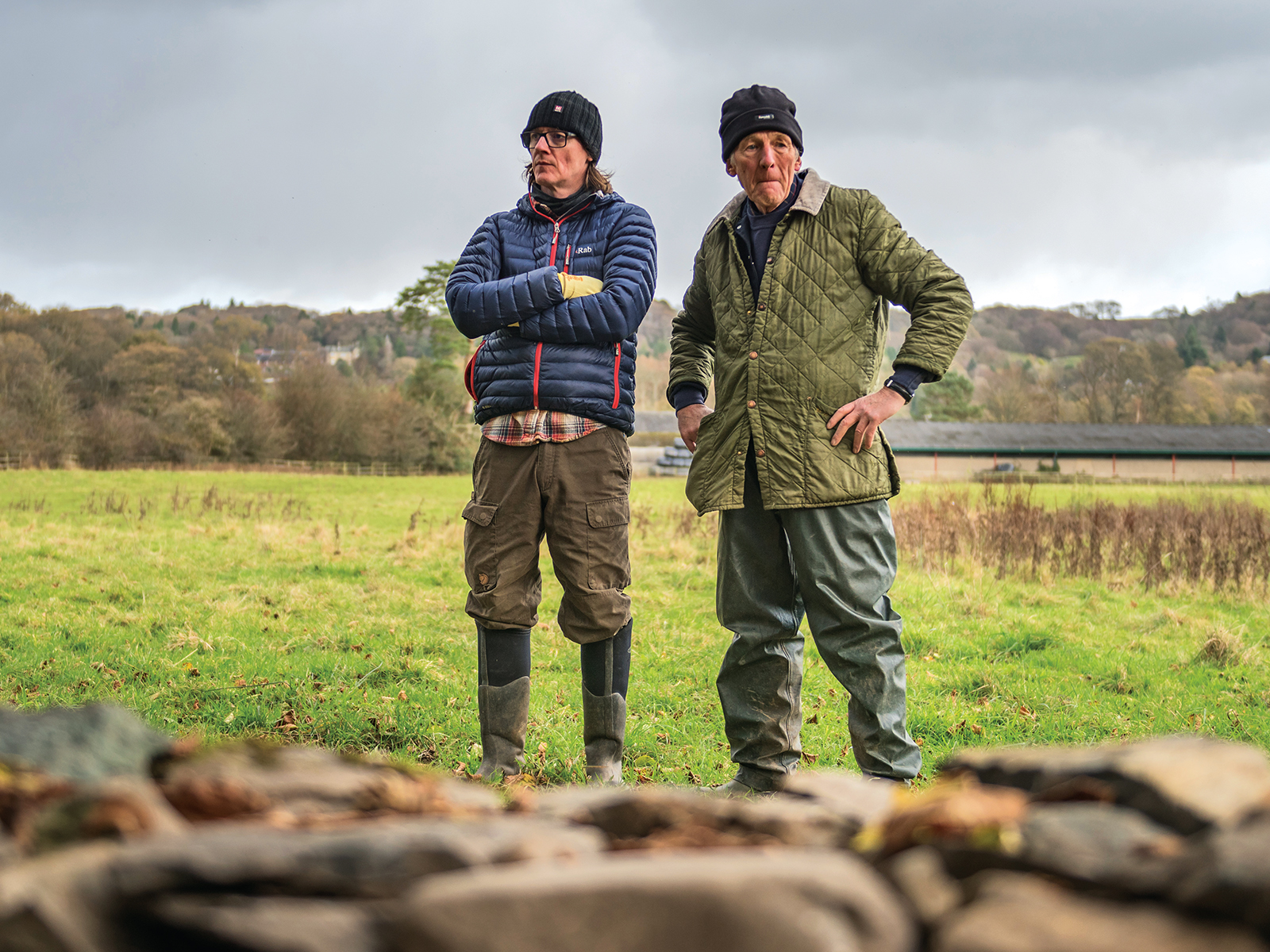
At the wall
My lesson starts with Chris showing me some diagrams concerning the rudiments of walling. I knew it wasn’t going to be a simple case of piling rocks on top of each other but I am still surprised at just how complex the process was. For instance, I was never really aware when looking at a wall that they’re appreciably wider at the bottom and taper as you build upwards. Larger stones are placed lengthwise into the wall with their shorter side facing out, and should be wedged up by smaller stones placed inside the wall rather than outside. After placing the larger stones, you then put smaller stones around them like you would when packing a suitcase. You shouldn’t really hammer the stones into shape but instead work with the shape they are, and every single one of those rules I’ve just told you can be broken if it means the stone fits better! It’s a lot to take in.
As with so many things in life, the only way to really learn how to build a wall is to build a wall so, having absorbed as much of Chris’s teachings as I can, he and I head down to the field where Irvine has set up our A-frame and plumb line on the bit of wall I’ll be attempting to reconstruct. Obviously I’m not building a wall from scratch. The lads are in the process of moving a wall away further into a field away from an area that’s becoming increasingly flood prone.
The stones are laid out on the ground and it’s just a case of my finding the right ones to place here and there. Irvine gives me the most important piece of advice he can impart: “Never step back from the wall to check your work. Always turn around, walk forwards away from the wall, them turn back around to face the wall again. If you step backwards on a dry stone wall building site YOU WILL trip over a pile of stones and end up on your arse.” Of all the bits of information I’ve been given, this seems like the most sage like advice.
I pick up my first stone. I notice that one end is covered in moss. Obviously that should be the end that faces out from the wall, I reason, as that’s clearly the end that faced out when the wall was originally built. Chris tells me that I shouldn’t think like that as it assumes that the person who built the wall previously put the right end facing out. I, in turn would argue that, seeing as the wall has stayed standing for 200 years, the person who built it originally probably knew what they were doing. It seems so presumptuous for a soft-handed, namby-pamby layabout like myself to be second-guessing the craftsmanship of the farmer who built a wall that’s been standing since the end of the Napoleonic wars. Having said that, it’s not a jigsaw puzzle. It can’t go back together exactly the same way it did before.
As I pick up stones, turn them, try to place them, discard them and try again, the lads tell me that the goal is to only pick a stone up if I already know it’s going to fit. They say you can tell an experienced waller just by the sound of the construction process. You can hear a stone picked up, placed on the wall and then the sound of the next stone being picked up. With an inexperienced waller you can hear them repeatedly picking up stones and putting them down again. That is the sound I’m making, plus lots of sighing and swearing.
Chris and Irvine do their best to let me try to build the wall without interfering. This is easier for Chris as he has been incapacitated by a recent triple hernia operation so can’t lift anything heavier than a teacup. He does, however, point his walking stick at different stones he feels would make for ideal candidates. This gives him an almost Yoda-like presence. I half expect him to close his eyes and make the stones levitate into place.
After a few false starts and some time standing and watching while Irvine further demonstrates, I start to get into the swing of things. The first time I select the correct stone, place it in the right spot, wedge it with a couple of smaller stones and have it meet with Chris and Irvine’s approval, I feel my bosom swell with pride. But then I pick up the next stone and see them shake their heads in disapproval and I realise how far I still have to go in my apprenticeship.
After laying a couple of courses of stone, which the lads agree are “not bad at all”, we repair to Wilf’s café for some lunch. Chris and Irvine regale me with tales of all the events the association attends and work they do with local charities and I realise that the Dry Stone Walling Association is as much a part of the community as the walls themselves are part of the landscape. Hopefully that observation will impress my father-in-law, because at the moment, my wall building expertise won’t.

